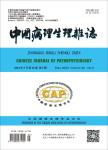Proteomic identification of proteins in exosomes of patients with atherosclerosis
Proteomic identification of proteins in exosomes of patients with atherosclerosis作者机构:Department of NeurologyShanghai Pudong New Area Gongli Hospital Department of Physiology and PathophysiologyFudan University Shanghai Medical College
出 版 物:《中国病理生理杂志》 (Chinese Journal of Pathophysiology)
年 卷 期:2016年第32卷第8期
页 面:1525-1526页
核心收录:
学科分类:1002[医学-临床医学] 100201[医学-内科学(含:心血管病、血液病、呼吸系病、消化系病、内分泌与代谢病、肾病、风湿病、传染病)] 10[医学]
基 金:Supported by the Great International Cooperation Program(No.81220108002) Key Program(No.30830050) Great Program(No.91539120) General Program(No.81170298 No.81270410 No.81100047)of the National Natural Science Foundation of China
主 题:PSMA
摘 要:AIM: Atherosclerosis primarily involved systemic arteries. Luminal surface,a monolayer of endothelial cells,of artery directly exposes to blood and is susceptible to active substances in the blood. Exosomes contain significantly amount of proteins and RNAs. Exosomes can be good and bad for cells,depending on their component. Thus,exosomes may contribute to atherosclerosis by affecting endothelial cells. This study analyzed the relationship of exosome proteins and atherosclerosis. METHODS: Fifty-six patients and healthy subjects were recruited and divided into two comparisons: healthy subjects vs atherosclerosis( HS vs AS),and hypertension vs hypertension plus atherosclerosis( HT vs HT + AS). Serum exosomes were decoded by protein mass spectrometry. The protein profile and function were analyzed by gene ontology( GO). RESULTS: It was found that five child terms repeatedly appeared inresponse to stimulusand immune system processof BP of the two categories( HS vs AS and AS vs HT + AS): positive regulation of innate immune response,immune response-activating signal transduction,activation of innate immune response,innate immune response-activating signal transductionand innate immune response activating cell surface receptor signaling pathway. Two child terms repeatedly showed in bindingof MF of the two categories: antigen bindingand enzyme binding. Two proteins,PSMA6 and PSMA7,were repeatedly shown in the two categories. CONCLUSION: GO analysis was utilized for structure hierarchytreeto illustrate these proteins involved in various terms in BP,CC and MF. The PPI analysis supplied proteins which may play potentially important roles in AS process. Innate immune system and blood coagulation pathway contribute to AS formation. The proteins,PSMA6,PSMA7 and Annexin A2,may can be the new target proteins for prevention and treatment of AS.



